GrabCAD

6 Cylinder Radial Engine (Pneumatic)
by GrabCAD
Last crawled date: 1 year, 11 months ago
Complete Assembly to build this 6 Cylinder Radial engine(Pneumatic type).
Ready for 3D printing, Just make a prototype at home or use the blueprints to learn how to model this stuff.
The radial engine is a reciprocating type internal combustion engine configuration in which the cylinders "radiate" outward from a central crankcase like the spokes of a wheel. It resembles a stylized star when viewed from the front, and is called a "star engine" in some languages. The radial configuration was very commonly used for aircraft engines before turbine engines became predominant.
Engine operation[edit]
Since the axes of the cylinders are coplanar, the connecting rods cannot all be directly attached to the crankshaft unless mechanically complex forked connecting rods are used, none of which have been successful. Instead, the pistons are connected to the crankshaft with a master-and-articulating-rod assembly. One piston, the uppermost one in the animation, has a master rod with a direct attachment to the crankshaft. The remaining pistons pin their connecting rods' attachments to rings around the edge of the master rod. Extra "rows" of radial cylinders can be added in order to increase the capacity of the engine without adding to its diameter.
Four-stroke radials have an odd number of cylinders per row, so that a consistent every-other-piston firing order can be maintained, providing smooth operation. For example, on a five-cylinder engine the firing order is 1, 3, 5, 2, 4 and back to cylinder 1. Moreover, this always leaves a one-piston gap between the piston on its combustion stroke and the piston on compression. The active stroke directly helps compress the next cylinder to fire, making the motion more uniform. If an even number of cylinders were used, an equally timed firing cycle would not be feasible.[1] The prototype radial Zoche aero-diesels (below) have an even number of cylinders, either four or eight; but this is not problematic, because they are two-stroke engines, with twice the number of power strokes as a four-stroke engine.[citation needed]
The radial engine normally uses fewer cam lobes than other types. As with most four-strokes, the crankshaft takes two revolutions to complete the four strokes of each piston (intake, compression, combustion, exhaust). The camshaft ring is geared to spin slower and in the opposite direction to the crankshaft. The cam lobes are placed in two rows for the intake and exhaust. For the example, four cam lobes serve all five cylinders, whereas 10 would be required for a typical inline engine with the same number of cylinders and valves.[citation needed]
Most radial engines use overhead poppet valves driven by pushrods and lifters on a cam plate which is concentric with the crankshaft, with a few smaller radials, like the Kinner B-5 and Russian Shvetsov M-11, using individual camshafts within the crankcase for each cylinder. A few engines utilize sleeve valves such as the 14-cylinder Bristol Hercules and the 18-cylinder Bristol Centaurus, which are quieter and smoother running but require much tighter manufacturing tolerances.
Blueprints were refrenced from inventorworks.be
Ready for 3D printing, Just make a prototype at home or use the blueprints to learn how to model this stuff.
The radial engine is a reciprocating type internal combustion engine configuration in which the cylinders "radiate" outward from a central crankcase like the spokes of a wheel. It resembles a stylized star when viewed from the front, and is called a "star engine" in some languages. The radial configuration was very commonly used for aircraft engines before turbine engines became predominant.
Engine operation[edit]
Since the axes of the cylinders are coplanar, the connecting rods cannot all be directly attached to the crankshaft unless mechanically complex forked connecting rods are used, none of which have been successful. Instead, the pistons are connected to the crankshaft with a master-and-articulating-rod assembly. One piston, the uppermost one in the animation, has a master rod with a direct attachment to the crankshaft. The remaining pistons pin their connecting rods' attachments to rings around the edge of the master rod. Extra "rows" of radial cylinders can be added in order to increase the capacity of the engine without adding to its diameter.
Four-stroke radials have an odd number of cylinders per row, so that a consistent every-other-piston firing order can be maintained, providing smooth operation. For example, on a five-cylinder engine the firing order is 1, 3, 5, 2, 4 and back to cylinder 1. Moreover, this always leaves a one-piston gap between the piston on its combustion stroke and the piston on compression. The active stroke directly helps compress the next cylinder to fire, making the motion more uniform. If an even number of cylinders were used, an equally timed firing cycle would not be feasible.[1] The prototype radial Zoche aero-diesels (below) have an even number of cylinders, either four or eight; but this is not problematic, because they are two-stroke engines, with twice the number of power strokes as a four-stroke engine.[citation needed]
The radial engine normally uses fewer cam lobes than other types. As with most four-strokes, the crankshaft takes two revolutions to complete the four strokes of each piston (intake, compression, combustion, exhaust). The camshaft ring is geared to spin slower and in the opposite direction to the crankshaft. The cam lobes are placed in two rows for the intake and exhaust. For the example, four cam lobes serve all five cylinders, whereas 10 would be required for a typical inline engine with the same number of cylinders and valves.[citation needed]
Most radial engines use overhead poppet valves driven by pushrods and lifters on a cam plate which is concentric with the crankshaft, with a few smaller radials, like the Kinner B-5 and Russian Shvetsov M-11, using individual camshafts within the crankcase for each cylinder. A few engines utilize sleeve valves such as the 14-cylinder Bristol Hercules and the 18-cylinder Bristol Centaurus, which are quieter and smoother running but require much tighter manufacturing tolerances.
Blueprints were refrenced from inventorworks.be
Similar models
grabcad
free

Radial engine
...s and the 18-cylinder bristol centaurus, which are quieter and smoother running but require much tighter manufacturing tolerances
grabcad
free

radial engine assembly
...cylinders was used, the firing order would be something similar to 1,3,5,2,4,6, which leaves a three-piston gap between firing...
grabcad
free

Radial Engine
...ectly to the crankshaft - this is the master rod. the other cylinders' rods connect to pivoting points around the master rod.
grabcad
free

Radial engine piston
...by articulated rods. in an 18-cylinder engine, which has two rows of cylinders, there are two master rods and 16 articulated rods
grabcad
free

CamShaft
...lve. the cam lobes force the valves open by pressing on the valve, or on some intermediate mechanism, as they rotate.
automotive
cg_trader
$35

Single cylinder 4-stroke engine
...r motorcycle piston valve motorbike automobile crankshaft camshaft combustion fourstroke 4stroke singlecylinder motorcycle engine
grabcad
free

Radial Engine Model
...ts and motion links. the following parts are animated:
• rotor
• pistons
• camshafts
• camshaft gears
• connecting rods
• valves
grabcad
free

Piston-Cylinder and Crankshaft assembly
...on within the working cylinder into a piston stroke, which the crankshafts converts into useful torque available at the flywheel.
grabcad
free

Two stroke apposed pistons parallel cylinders internal combustion engine
...ns or their multiples connected in coordination to one crankshaft by means of rods and a swing arm for each of the two cylinders.
grabcad
free

Master Connecting Rod
...aft by a master connecting rod. the master connecting rod serves as the connecting link between the piston pin and the crank pin.
Pneumatic
3d_export
$7

pneumatic charging car
...pneumatic charging car
3dexport
pneumatic charging car
turbosquid
$20

pneumatic flap
...model pneumatic flap for download as dxf, ige, stl, and sldas on turbosquid: 3d models for games, architecture, videos. (1410890)
turbosquid
$2

pneumatic actuator
...l pneumatic actuator for download as 3ds, obj, blend, and stl on turbosquid: 3d models for games, architecture, videos. (1333375)
turbosquid
$30
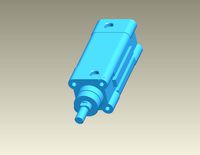
Cylinder pneumatic
... available on turbo squid, the world's leading provider of digital 3d models for visualization, films, television, and games.
turbosquid
$20
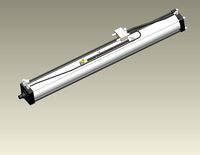
booster pneumatic
... available on turbo squid, the world's leading provider of digital 3d models for visualization, films, television, and games.
turbosquid
$10

Pneumatic Fitting
... available on turbo squid, the world's leading provider of digital 3d models for visualization, films, television, and games.
turbosquid
$5

pneumatic wheel
... available on turbo squid, the world's leading provider of digital 3d models for visualization, films, television, and games.
3d_export
$5

Pneumatic Unit 3D Model
...pneumatic unit 3d model
3dexport
pneumatic unit pressure velocity
pneumatic unit 3d model fau 71223 3dexport
turbosquid
$3

Pneumatic grinder
...r download as 3ds, dxf, obj, xsi, wrl, fbx, dwg, dae, and skp on turbosquid: 3d models for games, architecture, videos. (1389593)
3d_export
free

pneumatic manifold block
...atic manifold block
3dexport
modified pneumatic manifold block for shooting particles, using festo valves installed on its face.
Radial
3d_ocean
$5

Radial engine
...dial engine
3docean
engine radial
this is a radial engine used by the old airplanes. it is made in autodesk inventor and autocad.
3d_export
$5
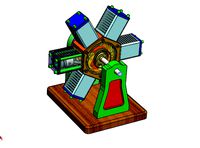
radial engine
...ne , clearly shows how a radial engine works and all the parts present in it for a student or an engineer to have a glans on it .
3d_export
$5

shaft radial bearing
...shaft radial bearing
3dexport
shaft radial bearing
turbosquid
$7

Radial engine
...bosquid
royalty free 3d model radial engine for download as on turbosquid: 3d models for games, architecture, videos. (1672376)
turbosquid
$7
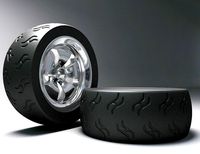
Radial Tyre
...osquid
royalty free 3d model radial tyre for download as max on turbosquid: 3d models for games, architecture, videos. (1433150)
turbosquid
$60

Radial engine
... available on turbo squid, the world's leading provider of digital 3d models for visualization, films, television, and games.
turbosquid
$35

VOITH RADIAL PROPELLER
...alty free 3d model voith radial propeller for download as max on turbosquid: 3d models for games, architecture, videos. (1338129)
3d_export
$20

radial engine assembly
...radial engine assembly
3dexport
turbosquid
$4
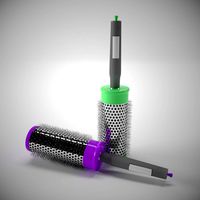
Radial Hair Brush
... 3d model radial hair brush for download as max, obj, and fbx on turbosquid: 3d models for games, architecture, videos. (1183870)
turbosquid
$39

Wheel ATS Radial
... available on turbo squid, the world's leading provider of digital 3d models for visualization, films, television, and games.
Cylinder
turbosquid
$1

Piston - Cylinder Cylinder Engine
...nder cylinder engine for download as ige, obj, stl, and sldpr on turbosquid: 3d models for games, architecture, videos. (1235278)
3ddd
$1

sofa cylinder
...sofa cylinder
3ddd
круглый
sofa cylinder
turbosquid
$1

Cylinder Head - Single Cylinder Engine
...ngle cylinder engine for download as ige, obj, stl, and sldpr on turbosquid: 3d models for games, architecture, videos. (1222618)
turbosquid
$16

Cylinder
... available on turbo squid, the world's leading provider of digital 3d models for visualization, films, television, and games.
turbosquid
$10

Cylinder
... available on turbo squid, the world's leading provider of digital 3d models for visualization, films, television, and games.
3d_export
$120

Four cylinder
...four cylinder
3dexport
four cylinder render 3d modelling
3d_export
$5

piston cylinder
...piston cylinder
3dexport
piston cylinder arrangement sketched in solidworks
3ddd
$1

Cylinder Lamp A
...cylinder lamp a
3ddd
cylinder form lamp for loft interior
archive3d
free

Cylinder 3D Model
... model
archive3d
cylinder drum
cylinder - 3d model (*.gsm+*.3ds) for interior 3d visualization.
archive3d
free

Cylinder 3D Model
...odel
archive3d
drum cylinder
cylinder 2 - 3d model (*.gsm+*.3ds) for interior 3d visualization.
6
3d_export
$18

tulip 6
...tulip 6
3dexport
tulip 6
3d_export
$5

hinge 6
...hinge 6
3dexport
hinge 6
3ddd
$1
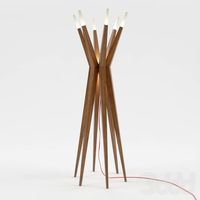
MASIERO / FLASHWOOD STL 6 + 6
...6
3ddd
masiero
торшер flashwood stl 6 + 6 фабрики masiero
http://www.masierogroup.com/c87_697/it/flashwood%20stl%206%20+%206.ashx
turbosquid
$110

Atmos Cannon 2000 6*6
...yalty free 3d model atmos cannon 2000 6*6 for download as skp on turbosquid: 3d models for games, architecture, videos. (1528591)
turbosquid
$1

ae 6 6 electric locomotive
... free 3d model ae 6 6 electric locomotive for download as obj on turbosquid: 3d models for games, architecture, videos. (1707537)
turbosquid
$39
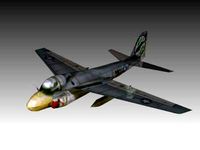
A-6
... available on turbo squid, the world's leading provider of digital 3d models for visualization, films, television, and games.
3ddd
$1

6 ковров
...6 ковров
3ddd
ковры , ковер
6 ковров
turbosquid
$12

Calligraphic Digit 6 Number 6
...hic digit 6 number 6 for download as max, obj, fbx, and blend on turbosquid: 3d models for games, architecture, videos. (1389336)
turbosquid
$19

Case For Phone 6 Girl 6
... available on turbo squid, the world's leading provider of digital 3d models for visualization, films, television, and games.
turbosquid
$35

Iphone 6 & 6 Plus All
... available on turbo squid, the world's leading provider of digital 3d models for visualization, films, television, and games.
Engine
3d_export
$5
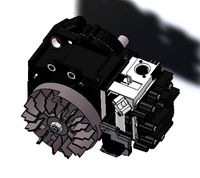
engine
...engine
3dexport
engine
3d_export
free
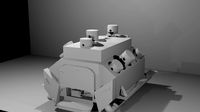
Engine
...engine
3dexport
engine
archibase_planet
free
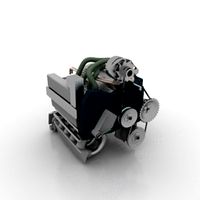
Engine
...engine
archibase planet
motor engine
engine - 3d model for interior 3d visualization.
archibase_planet
free
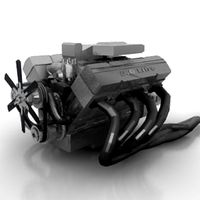
Engine
...engine
archibase planet
motor engine mover
engine n170708 - 3d model (*.3ds) for interior 3d visualization.
archibase_planet
free
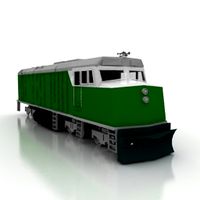
Engine
...engine
archibase planet
engine locomotive train
locomotive - 3d model for interior 3d visualization.
turbosquid
$49
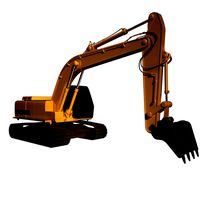
ENGINE
...
turbosquid
royalty free 3d model engine for download as max on turbosquid: 3d models for games, architecture, videos. (1206116)
turbosquid
$1

ENGINE
...osquid
royalty free 3d model ic engine for download as sldas on turbosquid: 3d models for games, architecture, videos. (1382781)
3d_export
$5

engine
...engine
3dexport
3d_export
free

engine
...engine
3dexport
turbosquid
$7

Engine
...d model animated engine mograph element3d for download as c4d on turbosquid: 3d models for games, architecture, videos. (1380716)
